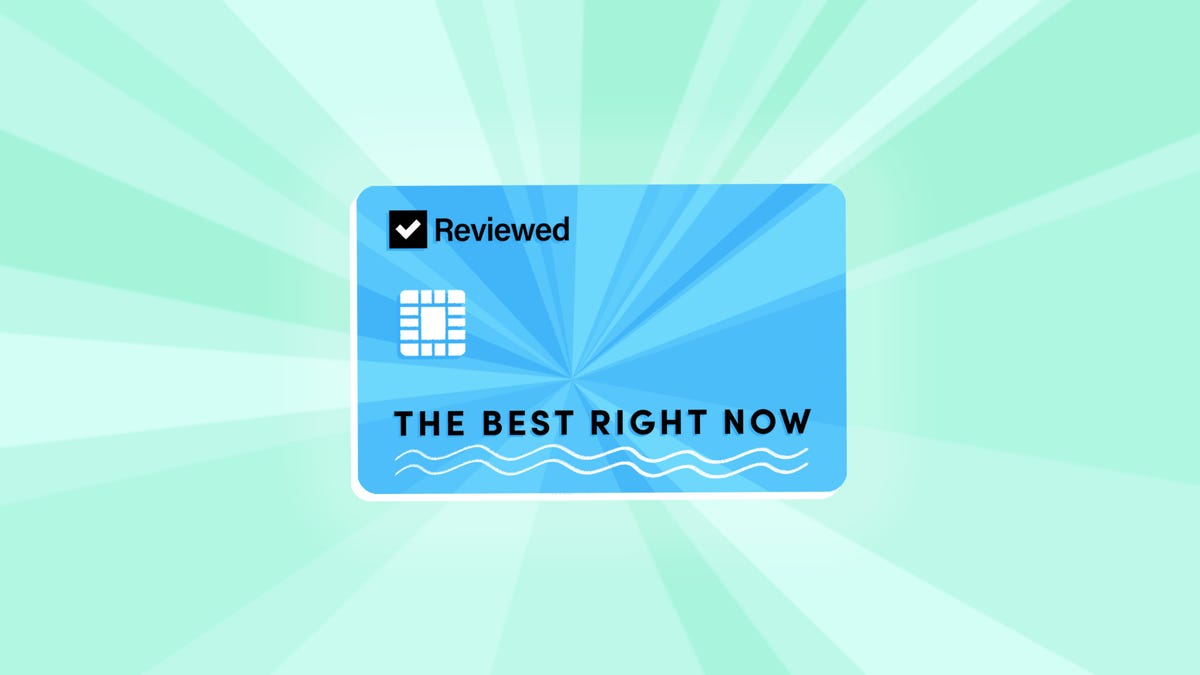LATEST FINANCIAL NEWS
The best balance transfer credit cards of 2021
Taylor Medine
| Reviewed— Our editors review and recommend products to help you buy the stuff you need. If you sign up for a credit card after clicking one of our links, we may earn a small fee for referring you. However, our picks and opinions are independent from USA TODAY’s newsroom and any business incentives.If you’re making credit card payments but not seeing a dent in your balance, this revelation may come as a relief: You’re not just imagining things. Part of your monthly payment goes to interest before it even touches the principal. Using a balance transfer card could help you pay off that credit card debt faster.Balance transfer cards offer a low-interest or zero-interest introductory special for balances you move from an old card to a new card. Typically, the special lasts for 12 to 18 months. During this time, you can attack the principal balance without worrying about interest getting in the way.We dug through dozens of offers to bring the best balance transfer credit cards to consider.Things to know about balance transfer credit cardsBefore we start, here are some things you should know about balance transfer cards:Good credit or better is usually necessary to qualify. A credit check is typically required at application, and the hard inquiry could temporarily impact your credit score. Credit card issuers often charge a fee for transferring your balance. This fee is generally 3% of the balance you transfer. So, if you transfer $3,000 to a balance transfer card, you could expect to pay around $90 for the fee. While the fee does eat into your potential savings, it could majorly outweigh the interest you’d pay with your current card. Credit limits vary. Your credit limit is usually determined after you apply, so there’s a possibility that you might get approved for a credit limit that’s lower than the balance you want to transfer. Also, credit card issuers may set limits for how much money you can move. Chase, for example, lets you transfer up to $15,000 within a 30-day period. Transfers need to be made within a certain amount of time. Usually, only balances transferred within the first one to four months of signing up qualify for the low-interest deal. As always, read a card’s terms and conditions before you sign on the dotted line. Perhaps the most important thing to note: Interest increases after the introductory period. After the low-interest deal ends, interest jumps up to the standard interest rate that’s based on your creditworthiness. To get the most out of a balance transfer offer, get a game plan in place. You’ll want to know what monthly payments to make to pay off the transfer within the interest-free period. Otherwise, the interest you end up paying will cut into your savings.How we evaluatedMy name is Taylor, and I’m a personal finance writer who’s been reviewing credit cards and rewards programs since 2015. For this roundup, I took a look at 17 balance transfer cards to review what they had to offer. Then I compared balance transfer fees, the length of the low-interest period, and other card costs and features to come up with this “best of” list.The no-annual-fee U.S. Bank Visa Platinum Card offers the longest 0% APR balance transfer period around. If you have a high balance that you want to pay off over an extended period of time, this card gives you an interest-free vacation that lasts for almost two years before a variable rate kicks in.Balance transfer offer: 0% APR for 20 billing cycles on balance transfers made within 60 days of account opening. The card has a 3% balance transfer fee.Other important features: U.S. Bank lets you choose your payment due date. The card comes with TransUnion VantageScore® updates and provides cell phone protection coverage.Learn more about the U.S. Bank Visa Platinum CardThe Citi Double Cash gets a lot of attention for its rewards program that gives a total of 2% cash back on all purchases—1% when you make a purchase and 1% when you pay it off.In addition, the Citi Double Cash offers 0% APR for more than a year on balance transfers. After 18 months from account opening, the interest rate increased based on your creditworthiness. This is an especially appealing option if you’re looking for a card that’ll be useful after you get rid of your balance, as you can rack up unlimited cash back on future purchases.Balance transfer offer: 0% APR for 18 billing cycles on balance transfers made within four months of account opening. The balance transfer fee is 3%.Other important features: There are no restrictions or spending caps on the cash-back rewards. You can redeem cash back earned for statement credits, direct deposits, checks, or convert to points. Cardholders can take advantage of contactless payments, identity theft solutions, and more.Learn more about the Citi Double Cash CardWhile the 0% APR offer on the no-annual-fee Navy Federal Platinum Credit Card is shorter than other cards on this list (just 12 months), there’s no balance transfer fee and it offers a low APR even after the 0% APR introductory ends.Because of this, it could be a high-value card for people who qualify for Navy Federal Credit Union membership. Just make sure you transfer balances quickly—only balances transferred within 30 days of account opening qualify for the 0% APR special.Credit union membership is open to more people than you might think. Active duty service members, Army and Air National Guard personnel, Department of Defense (DoD) civilians, government employees and contractors who work on DoD installations, and their family members are all eligible.Balance transfer offer: 0% APR for 12 billing cycles on balance transfers made within 30 days of account opening, and there’s no balance transfer fee. While credit limits vary for individuals, Navy Federal notes that balance transfers cannot exceed $30,000.Other important features: The Navy Federal Platinum Credit Card has no cash advance fee if withdrawing money from a Navy Federal branch or ATM. There’s also no foreign transaction fee. The card comes with cell phone protection, a collision damage waiver, and travel assistance.Learn more about the Navy Federal PlatinumThe BankAmericard has no annual fee and offers a balance transfer special that gives you a year and a half to pay off your balance before the interest rate hikes up. The card doesn’t charge penalty APR if you pay late, but there is a late fee to watch out for. If you’re a Bank of America customer, you have the option to connect this credit card to your bank account for overdraft protection.Balance transfer offer: 0% APR for 18 billing cycles on balance transfers made within 60 days of opening your account. The balance transfer fee is 3%.Other important features: Bank of America offers FICO credit score updates each month through online and mobile banking. With this free feature, you can see what factors are impacting your credit score.Learn more about Bank of America credit cardsWith the no-annual-fee Citi Simplicity, you can make interest-free payments on balance transfers for a year and a half, after which a variable APR will apply. Plus, the card touts no late fees and does not charge a penalty APR if you miss a payment.Balance transfer offer: 0% APR for 18 billing cycles on balances transferred within four months of opening the account. The balance transfer fee is 3%.Other important features: You can choose your payment due date. The card also comes with identity theft solutions, 24/7 customer service, and contactless payment capabilities.Learn more about the Citi SimplicityThe Wells Fargo Platinum Card has no annual fee and comes with several cardholder benefits, including a rental collision damage waiver and roadside assistance. That’s on top of the 0% APR offer on balance transfers that lasts for a year and a half before a variable interest rate kicks in.Balance transfer offer: 0% APR for 18 billing cycles on balance transfers made within four months of account opening. The balance transfer fee is 3%.Other important features: The card comes with travel accident insurance, cell phone protection, and more. Wells Fargo Online® also offers free FICO credit scores and My Money Map, a tool that can help you budget and track spending.Learn more about this Wells Fargo cardWhile the no-annual-fee SunTrust Prime Rewards card doesn’t offer 0% intro APR on balance transfers, it does offer a very low rate on balance transfers for three years with no balance transfer fee (as long as you make the transfer within 60 days). If while evaluating other cards you suspect you’ll still have debt to pay off after a 0% APR deal ends, a low rate for a longer-term might offer more savings.Here’s an example: Let’s say you transfer $15,000 to a card offering 0% intro APR for 18 months on balance transfers with a 3% fee. The balance to pay off would be $15,450 including the fee.If you make payments of $500 per month, you would have a $6,450 balance remaining at the end of 18 months. If the APR jumps to 19% after the 0% intro period, the balance would take an additional 15 months to pay off, and you’d pay $823 in interest.On the other hand, if you transfer $15,000 to a credit card with no balance transfer fee and a much lower APR—say 3.25%—you would pay $665.86 in total interest over 32 months with payments of $500.Depending on how much you have to pay off and the monthly payment you can make, taking a longer low-interest period could be cost effective.Balance transfer offer: The interest rate for this card is the Prime Rate (currently 3.25%) for three years. Typically, credit card interest rates are the Prime Rate plus an additional percentage. For comparison, the current national average credit card APR is around 16%.Keep in mind that this card’s interest rate is variable and can fluctuate as the Prime Rate fluctuates. While in May 2021, the Prime Rate is at 3.25%, in May 2019 it was 5.5%. However, the Fed plans to keep rates low, so you may not have to worry about a rate increase for the time being.To get the most out of this card, transfer your balance in a timely manner: It has no fee for balances transferred within 60 days; after that, the fee increases to 3%.Other important features: SunTrust provides FICO credit score updates and has no foreign transaction fee if you find yourself abroad, though watch out for the higher APR on cash advances.Also, try to avoid new purchases. If you shop with the card, interest on new purchases will be charged to your account unless you pay off the whole balance (including the balance you transferred) by the end of the month.Learn more about the SunTrust Prime RewardsOther balance transfer credit cards we evaluatedFor this list, we focused on the balance transfer offer and related fees. Many cards that didn’t make the cut have shorter 0% APR periods but still come with plenty of valuable benefits and rewards opportunities. (That’s why you’ll find picks from our best grocery credit cards and best no-annual-fee credit cards below.)Depending on your situation, these may still be a viable option if you can work with a tighter 0% APR timeline and want to take advantage of perks after paying off the balance.U.S. Bank Altitude® Go Visa Signature® Card: While there’s no annual fee, the introductory APR is on the shorter side at 12 billing cycles. For those who can swing a tighter timeline, the rewards program offers 4X points on takeout, food delivery, and dining; 2X points at grocery stores, grocery delivery, streaming services, and gas; and 1X point on everything else. Learn more Citi® Diamond Preferred® Card: This no-annual-fee card offers 0% APR for 18 months and charges a balance transfer fee of 3%. While it has a long no-interest period, this card had stiff competition from other sister Citi cards. The Citi Simplicity card has no late fees or penalty APR, and the Citi Double Cash has a high-value rewards offer. Learn more Citi Rewards+® Card: You won’t pay an annual fee and can take advantage of 0% APR on qualifying balance transfers for 15 months, though a 3% balance transfer fee applies. Beyond that, this card offers 2X ThankYou® Points on gas and groceries and 1X points on everything else. Learn more Discover it® Cash Back Credit Card: No annual fee here, but there’s 0% APR for 14 months on balance transfers, which is several months shorter than other cards on the list above. Also, the intro balance transfer fee is 3% only for a limited time. Afterward, the fee may be up to 5% for future balance transfers. For rewards, this card has a lot to offer: 5% cash back in revolving categories, such as groceries, drugstores, gas stations, restaurants, wholesale clubs, and more. Learn more Discover it® Chrome: No annual fee and 0% APR for 14 months on balance transfers. The intro balance transfer fee is 3% for a limited time. Afterward, the fee may be up to 5%. For rewards, you can earn 2% cash back at gas stations and restaurants on the first $1,000 you spend per quarter. Learn more Bank of America® Cash Back Rewards Credit Card: This no-annual-fee card does have a nice rewards offer. You can earn up to 3% cash back in a shopping category of your choice (everything from online shopping to home improvement stores), 2% cash back at grocery stores and wholesale clubs, and 1% cash back on everything else. The balance transfer offer is 0% APR for 15 months, and the balance transfer fee is 3%. Learn more Wells Fargo Cash Wise Visa® Card: No annual fee and 0% APR for 15 months with a balance transfer fee of 3%. The rewards offer is an unlimited 1.5% cash back on all purchases—a fair rewards rate, to be sure, though the Citi Double Cash currently offers a longer introductory period and beats it at 2% if you regularly pay your bill. Learn moreWhat to do before you transfer a balanceBreak out a calculator. You’ll want to make sure that opening a new card will save you money in the long run. To start, figure out what you’d pay in interest with your current credit card debt if you were to pay it off in 18 or so billing cycles. With an introductory APR period, you’ll save on interest—but don’t forget about those fees. They typically range anywhere from 3% to 5%, though we’ve found a couple that forgo balance transfer fees. (And remember, it’s likely transfers must be completed within a set time frame, usually around 30 or 60 days.) Look at the timeline. You may not know the credit limit on a card you haven’t opened, but take the amount you’re hoping to transfer. Divide it by the interest-free period to come up with a monthly payment plan. Is it reasonable with your budget? Don’t forget: Once the introductory period ends, a variable APR based on your creditworthiness will kick in, and you’ll pay interest on anything outstanding. Consider your credit score. Opening a new card affects your credit health a few ways. For one, the application typically requires a hard inquiry that will temporarily knock your score. A new account will also lower the average age of your credit history, another factor that’s used to determine credit health. Your credit utilization will change, too. A new card with the transferred balance may nearly max out your credit limit, though it’ll increase your overall credit limit.Please note: The offers mentioned above are subject to change at any time and some may no longer be available.Reviewed has partnered with CardRatings for our coverage of credit card products. Reviewed and CardRatings may receive a commission from card issuers.The product experts at Reviewed have all your shopping needs covered. Follow Reviewed on Facebook, Twitter, and Instagram for the latest deals, product reviews, and more.
Source link









